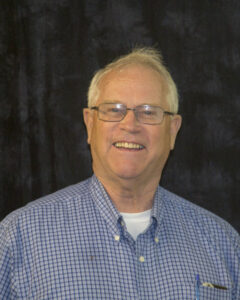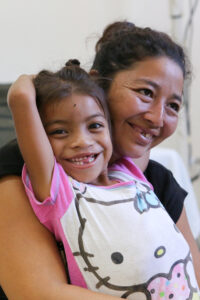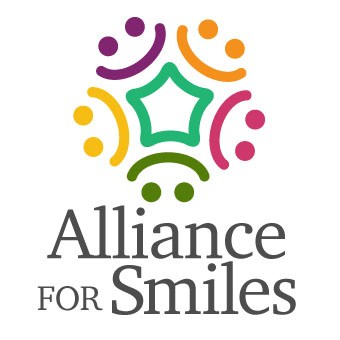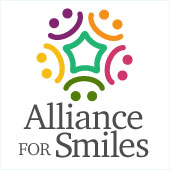It’s been 20 years since Alliance for Smiles was formed with the mission to transform the lives of children born with cleft lip and palate by providing free comprehensive treatment.
As we grew, so did our objectives which now includes training, equipping and empowering local medical providers to address the long-term needs of cleft patients.
To celebrate our 20th anniversary, we wanted to not just look back on our journey, but also the people who made our missions possible – the many volunteers who generously shared their time, experience and skills; the staff who work tirelessly behind the scenes and the board members whose knowledge and expertise shape our future.
Jim Patrick
Board Member and Co-Founder of AfS
 Co-founder Jim Patrick shares the inspiring journey behind Alliance for Smiles (AfS) in this interview, reflecting on AfS’s early days and how it has grown to serve nearly 8,000 children globally.
Co-founder Jim Patrick shares the inspiring journey behind Alliance for Smiles (AfS) in this interview, reflecting on AfS’s early days and how it has grown to serve nearly 8,000 children globally.
Jim discusses the unique challenges AfS has overcome, from funding and recruiting medical volunteers to coordinating complex international missions. He also emphasizes the immense personal reward that comes from witnessing life-changing transformations first-hand, sharing heartfelt stories that highlight the impact of AfS on families and communities around the world.
Read his detailed interview below:
What was it about AFS that made you first want to go on a mission?
 What inspired you to co-found AfS?
What inspired you to co-found AfS?
Jim Patrick: The original idea was to create an alternative avenue for raising funds to support operations for children with cleft conditions in China. Since then, our missions have expanded beyond China.
What is the one that you are most proud of accomplishing over the past 20 years?
Jim Patrick: Oh, really providing a spark of leadership and some money to make it all work. We’ve had over 100 missions. That’s pretty incredible!
And initially there were five of us who sat around a desk and said, “Listen, this is something we’re going to do.” And we set out and we did it! And a lot of people benefitted, specifically 8000 kids. You’re making them an asset to the community. So, you know, it’s quite rewarding.
What challenges do you believe have AfS overcome to be where it is today?
Jim Patrick: The challenges are always raising money. And also recruiting medical personnel for the missions. Those are our two primary challenges. It’s a big job to send people to assess the hospitals, to coordinate with another Rotary Club and make a commitment to go to the country. Then motivating the doctors and nurses to take on this task. Then you have to fundraise for this task. Each trip can cost up to $85,000. The easy part is to go on the trip. It’s a lot of work getting ready for it and making it all happen.
But we have overcome these challenges by having good people work for us. Anita Stangl started that. The Board of Directors works well, and the employees work well, and they’re focused on the task at hand, and we deliver a lot of good services. Our Executive Director Jessica’s doing a great job of running the organization. I think Tina Fischlin, who is a Director, is a great asset. She operates out of Georgia. We really have dedicated people who are both good fundraisers and good administrators.
It takes a lot of organization, and takes a lot of soul searching and people asking. And people are good at that.
What is your vision for AfS – where do you hope to see AfS 10 years from now?
Jim Patrick: I think we’re going to keep working, trying to obviously expand our reach. The need continues to be out there, and we need to continue to fundraise to try to do more.
What message do you have for anyone who wishes to be a part of AfS in any capacity, whether as a volunteer, donor or supporter?
Jim Patrick: Number one – you get good value for your dollar because it all goes to work. And there’s tremendous personal reward in terms of going on one of these trips, as you see the doctors and nurses and the patients, particularly the mothers, come in with their children. And the kids get operated upon, and then you put the patient back in the mother’s hands, and you can see the immediate change. You just can’t manufacture that!
 Just a little story: At one hospital, I had the chance to return a child to their mother after surgery. We got into a bit of a humorous misunderstanding because she kept saying, ‘Thank you, Dr. Jim.’ I kept explaining that I wasn’t a doctor—I was really just there to hand the child back to her. The problem was, she spoke only Spanish, and I spoke only English, so we went back and forth like this for a minute or two. Finally, I just said, ‘Yeah, you’re welcome.’ I decided to take responsibility for the doctor in that moment. She took her child in her arms, tears in her eyes, and that moment was truly rewarding.
Just a little story: At one hospital, I had the chance to return a child to their mother after surgery. We got into a bit of a humorous misunderstanding because she kept saying, ‘Thank you, Dr. Jim.’ I kept explaining that I wasn’t a doctor—I was really just there to hand the child back to her. The problem was, she spoke only Spanish, and I spoke only English, so we went back and forth like this for a minute or two. Finally, I just said, ‘Yeah, you’re welcome.’ I decided to take responsibility for the doctor in that moment. She took her child in her arms, tears in her eyes, and that moment was truly rewarding.
There was another time when we were scheduling operations. Sometimes patients need a cleft palate surgery, and other times they require both a cleft lip and palate surgery. The combined procedure takes several hours. There’s a large schedule to manage, in terms of allocating time, and we were using post-it notes to make the schedule and make adjustments as needed. And then, guess what happened?
One post-it note fell on the floor. So I had to go back the next day and plead with the doctors and nurses to make sure the child got into the operation schedule. And he did!


